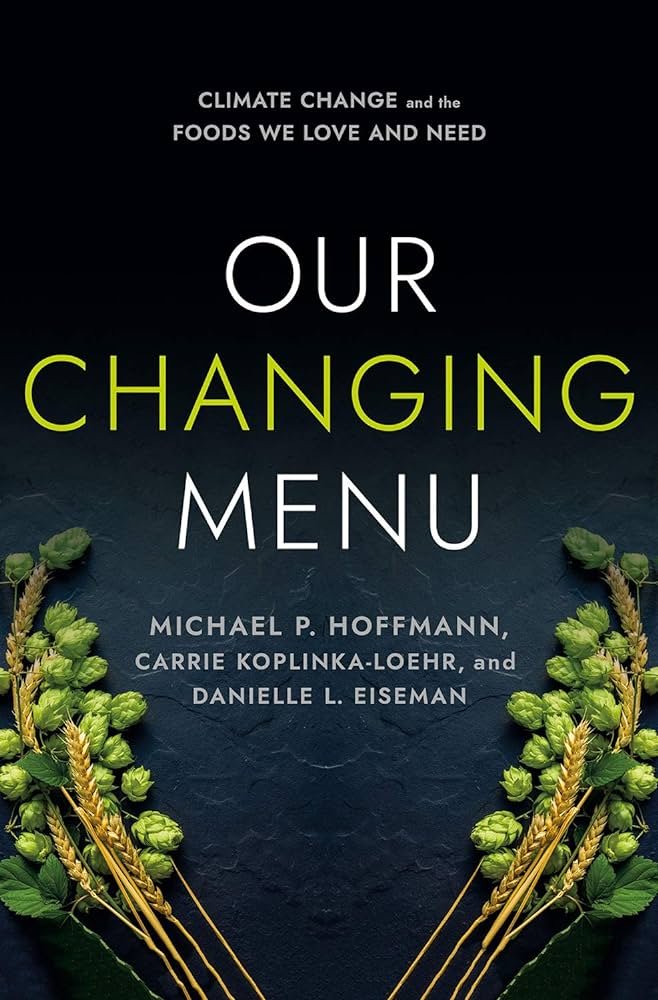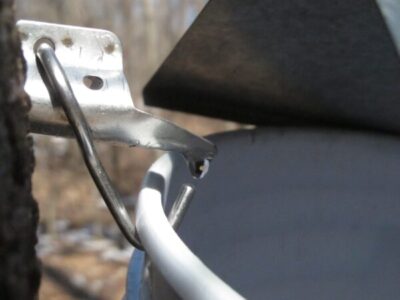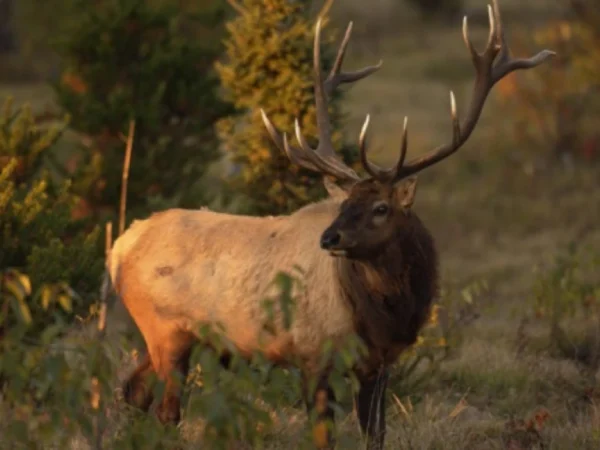
The Great Lakes region is known for its abundance. Vineyards flourish near the shores of lakes Erie and Michigan. Maple trees flow freely with sap that is made into syrup every spring. And of course, Great Lakes’ freshwater fish like perch, walleye and whitefish make their way onto our dinner plates.
But if you enjoy a glass of wine with dinner, syrup on your pancakes, or a good fish fry, don’t take these foods for granted. Changes in our climate are impacting foods produced in the Great Lakes region. Invasive pests threaten grape crops, erratic temperature fluctuations have made maple production more challenging and warming waters are making it harder for fish like walleye to thrive.
The Great Lakes are not alone in this growing concern. Our Changing Menu: Climate Change and the Foods We Love and Need, recently released by Cornell University Press, offers examples of how our global food system is affected by climate change. More importantly, it offers hope and solutions for the future that can be applied right here in the Great Lakes region and beyond.
While Our Changing Menu is written by academics, it does not read like a textbook. Rather, it makes a difficult topic approachable by using menu staples to examine the impact of climate change on what we eat and drink.
“If you eat, you will appreciate this story,” says co-author Michael P. Hoffmann. Hoffman, a professor emeritus in the Department of Entomology at Cornell University, is joined by renowned environmental journalist Carrie Koplinka-Loehr and marketing industry leader Danielle L. Eiseman, in tackling a complex issue with global impact. The authors draw upon their unique professional experiences to craft a “comprehensive assessment of what climate changes means for food.”
The book sets the table for discussion by outlining the interconnectedness of our global food supply and puts a human face on it by highlighting interviews with a diverse group of producers from around the world. Of course, scientific studies and data are referenced throughout to support the authors’ narrative.
The use of menu items as a guide to how climate change impacts our food systems is what makes Our Changing Menu digestible. While the authors don’t specifically mention the Great Lakes, they do highlight several items that are grown or raised here, and as such, lessons can be learned and applied to what is produced locally.
The book’s menu consists of beer, wine and spirits (grapes and hops), salads (avocado and olive oil), the main course (beef cattle, poultry, aquatic foods), grains (rice, wheat, starches and sides) and finally, desserts and coffee (dairy, vanilla, sugar, coffee beans). With each ingredient, the authors ask why it matters that it is being impacted by climate change, what is changing for that food and what is being done to protect it.
“Climate change is impairing the entire food system, from a plant’s needs—air, water, soil and the right temperature—to how we transport food and food products around the globe, “ the authors write.
While discussing the book at a meeting sponsored by the Council of the Great Lakes Region in July 2023, Hoffman cited statistics that show how climate change is creating a “whiplash” effect. For example, annual precipitation in the Great Lakes region is up by 14% and “downpours” have also increased by 42%. The region is also warming faster than the rest of the United States causing an increase of lake water temperature. Warming waters threaten native fish that have evolved for cooler temperatures. They also provide a welcoming environment for invasive species more used to warmer climes.
While the book outlines some stark realities, it also offers hope and optimism rooted in a team-based approach to tackling the climate crisis. Scientists and businesses have an important role to play to save our changing menu, the authors argue. Developing heartier crop varieties able to adapt to new climate patterns, innovating livestock management, and investing in producers are just some ways scientists and businesses can do their part.
Farmers in the Great Lakes region are already changing some of their practices. Hoffman notes that apple growers are changing where they plant trees to avoid frost damage. In Minnesota, farmers are increasing their use of tiling, a type of crop draining system to manage soil water saturation.
The authors also argue individuals are essential players in preserving what we eat and drink: “Given that food is universal, has a huge carbon footprint, is at risk, and is intimately tied to cultures and lifestyles, it could be a social tipping point. Imagine climate change being discussed over food and drink.”
In an attempt to make climate change and food mealtime conversation, Our Changing Climate is accompanied by a website which acts as a living document to fuel meaningful discussion that could lead to individual action. It features a searchable database of ingredients and plant-based products, describing how climate change affects each item.
For example, search for lake trout, and this is what you learn: “[t]he parasitic sea lamprey, which benefits from the warming of the Great Lakes, has been increasing in number and physical size, putting species such as lake trout, walleye, sturgeon, and catfish at increasing risk. Lake trout are also feeding less in the warming nearshore waters and more in deeper, cooler waters, potentially affecting the entire food web.”
If you are interested in the future of what is produced in the Great Lakes region and beyond, it is worth picking up a copy of Our Changing Menu, exploring its web database and starting a conversation about how climate change is affecting what you eat the next time you sit down for a meal.
Catch more news at Great Lakes Now:
Eat Your Heartland Out: The importance of commercial and recreational fishing in the Great Lakes
Culinary masters aboard Great Lakes freighters navigate the high seas of flavor
Featured image: Cover of “Our Changing Menu”. (Photo courtesy of Cornell University Press via Capri Cafaro)




